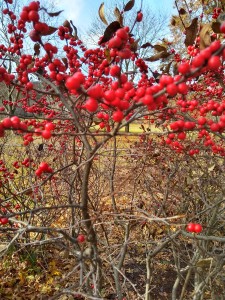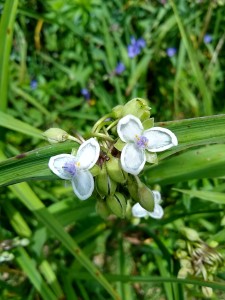
The problem with New Year’s resolutions is that they are usually too big to be manageable for more than a few weeks. Change—whether it is weight loss, curbing bad habits or de-cluttering your home environment—is best done in easily attainable increments that take human nature and time constraints into account.
I like to think about those increments as the plant catalogs roll in after the holidays and my thoughts turn to the upcoming gardening season. We gardeners already encourage cleaner air by planting living specimens that simultaneously fuel their own growth and release oxygen through the process of photosynthesis.
There are lots of other small, planet-saving acts that we can do while we fill up our souls with the energy that we get from gardening. Most of them are not particularly onerous or time consuming, and choosing the ones that suit each of us best can add up to big differences.
Tackling the plastics issue is important. We are over-reliant on plastic pots, which have the benefit of being cheap, lightweight and moisture retentive. The flip side of those benefits is that plastics live forever in the environment. Start fighting the plastics battle by looking at your own supplies of plastic nursery pots and containers and reusing them until they fall apart. If you have more plastic pots than you can possibly use, check with local botanical institutions and garden centers. Sometimes they will take clean, used pots for seedlings, sale specimens or transplants. You can also offer up your unwanted plastic pots on community websites. Either way, you save someone from buying new plastic pots and you reduce your supplies.
When you buy new plant containers, choose terra cotta, ceramic, wood or metal. Some garden centers also offer brightly colored, eco-friendly houseplant containers made from bamboo.
These days many plant vendors, especially mail order/online nurseries are switching to coir containers for shipping. Sometimes these same vendors cushion shipments with shredded cardboard or newsprint. If your favored vendors don’t do this yet, send an email suggesting it. You might be surprised at the response.
Save money and increase sustainability by dividing your existing perennials. This increases the health of many established varieties that become less vigorous if they are not divided periodically. If you plant the divisions elsewhere in your landscape, you will create repetition, a desirable design element. If you give the divisions to friends, you will most likely cultivate good will. Dividing most perennials is relatively easy—just dig up the entire plant and slice the root ball into segments. Don’t be squeamish; the procedure is unlikely to kill an established plant.
Growing plants from seed is another good way to increase your supplies and save money in the process. Easy to grow annuals, like cosmos, zinnias, sunflowers and marigolds can get you started on the grow-your-own process and the selection is often better than what you will find among the garden center flats once spring rolls around. Most can be sown directly in the garden, following package directions. If you are ambitious and have sunny space indoors, you can also start seedlings in coir or newspaper pots and transplant them after all danger of frost is past.
If you can possible accommodate a composter or compost pile, make your own soil enhancer from household and yard waste. If you are like me and live surrounded by big, deciduous trees, invest in a leaf shredder, which can turn an enormous leaf pile into a tidy mound of shredded mulch in minutes. That mulch can go directly onto your garden beds.
Some people are lucky enough to have lawn services to tend to lawns, leaves and shrubbery. The rest of us mow, rake or blow our leaves and trim our hedges. If you are in that category, consider investing in electric appliances the next time you need a lawnmower, string trimmer or hedge clippers. New battery-powered models run longer between charges. Corded models are relatively cheap and only require a long, heavy-duty outdoor extension cord. Some people find these onerous, but like anything else, you get used to it.
Clean and sharpen hand tools to lengthen their useful lives. Good tools treated properly should last a long time.
And finally, do your bit for wildlife by planting at least one tree or shrub that produces berries or fruits for the birds and small animals. Berries, whether they are dangle from species rose bushes, cluster on holly branches or cling to viburnums, add seasonal interest in fall and winter while enhancing habitats. If we help wildlife, we are doing ourselves a favor.
Taking small steps towards better environmental practices is not a political act, but a practical one. These practices are conservative in the classic sense of that word, because they conserve available resources for future use. They are also liberal in the classic sense, because they contribute generously to the common good. Our grandparents and forbearers most often practiced garden thrift for economic reasons. If we emulate them with a few modern twists, we can save money and increase sustainability. With those goals in mind, no act is too small.
